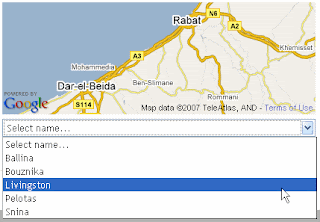ebook on the Google Maps API
This comes from our friend Eric at Geospatial Training... The fourth edition of our ebook on the Google Maps API covers everything you need to know about programming Google Maps to create dynamic web mapping applications with today's hottest mapping technology. You will learn how to create maps, add map controls for user interactions (zooming, and panning),
programmatically alter the map extent, add points of interest to the map, add custom icons, geocode addresses on the fly, read addresses from a database or XML file, display aerial photography, AJAX fundamentals, and event programming. New material in the fourth edition includes instructions on adding driving directions and traffic overlays in Google Maps, integration of Google Earth KML files, efficient management of large number of markers, and
much more.
To download a free copy of "Mashup Mania with Google Maps", please visit our
website at http://www.geospatialtraining.com.





